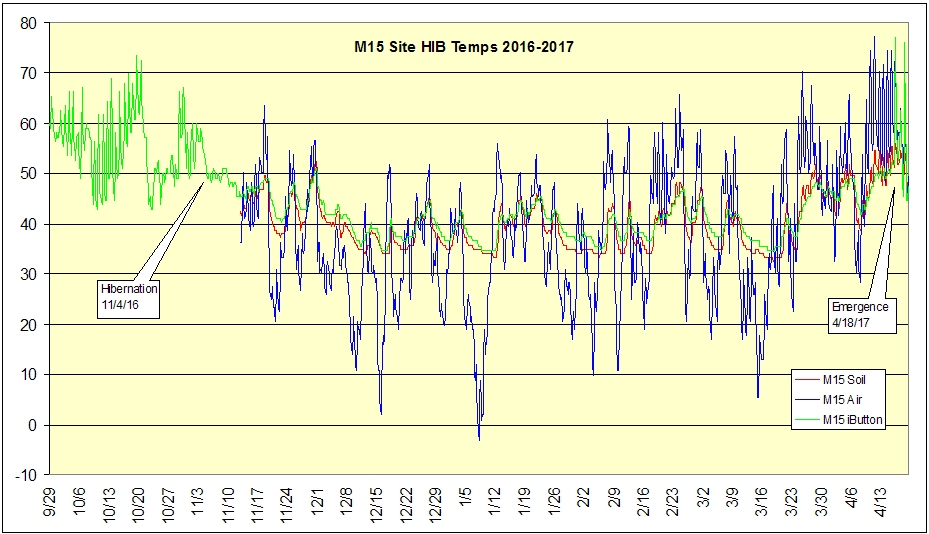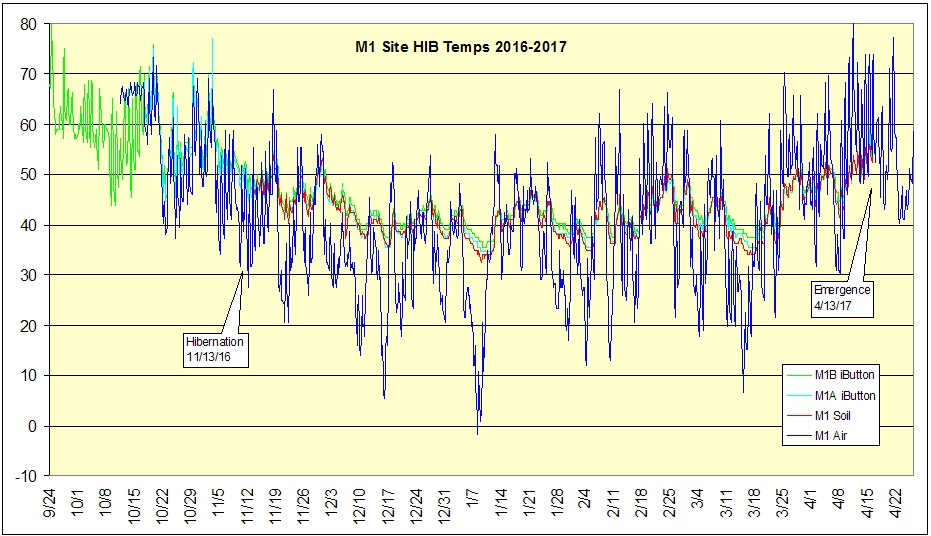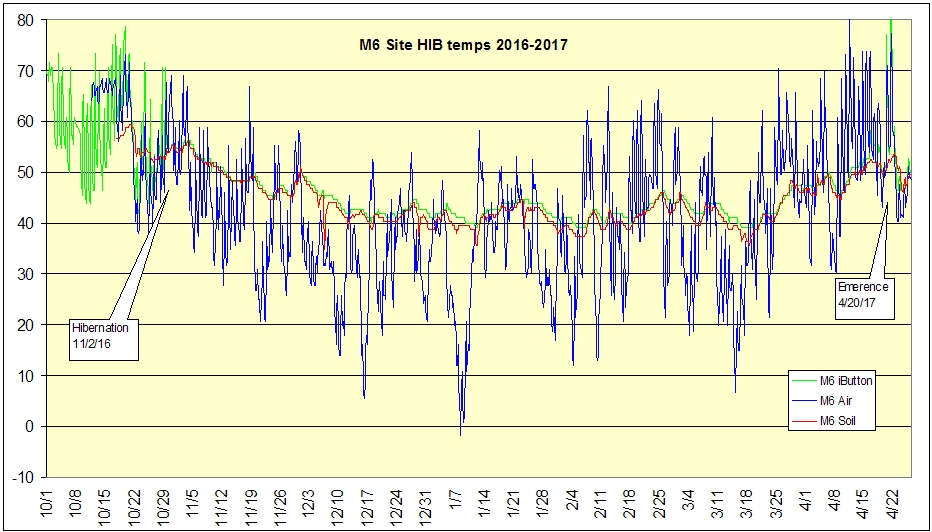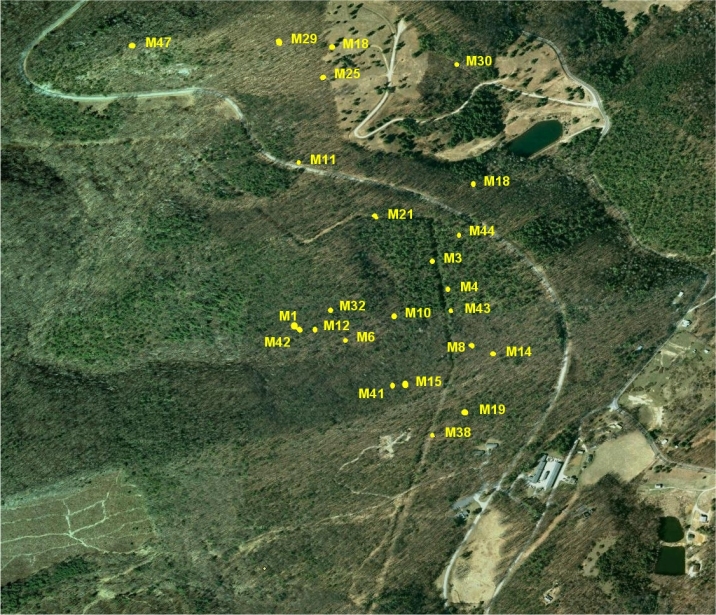Winter 2016-2017 Hibernation
After a mild fall, winter arrived on November 20th with an arctic blast as the western and the northeast states had their first snows and blizzards. All tracked turtles were by then underground in their hibernation holes for at least 10 days, as normal, but as December turned mild, 7 turtles emerged and moved up to several hundred feet to new hibernation locations. One turtle (M21) moved twice, and another (M47) moved, having a bad transmitter, and was lost dispite numerous searches. At least one turtle was still moving as late at December 28th.
The entire month of January was mild with many record and near record high spells, but winter finally seemed to arrive again with cold weather and snow on the 1/30/16. February was the warmest February on record.
Of 27 tracked study turtles, 2017 emergence started on April 10th and was complete on April 30th. Most turtles quickly moved away from their hibernation location, and several quickly traveled long distances into areas they were never before observed to travel.
This well protected site is located in a moist drainage that almost never receives direct sunlight, even during leaf-off, and has restricted air movement except possibly cold air drainage traveling down-slope. Consequently, winter air temperature peaks and troughs are moderated somewhat. Soil temperatures are comparable to other hibernation sites and remain between about 35 and 45 degrees. The green iButton trace, prior to hibernation, is the result of surface travel to the site, and the iButton receiving direct sunlight and re-radiation of surface heating from the forest leaf litter.
This site is on a north-facing slope with rich, moist soils, and is partially sheltered by the slope aspect and a heavy Rhodedenron understory. The soil temperatures are similar to other hibernation sites. The green iButton trace prior to hibernation is the result of above-ground travel to the site, and don't represent actual air temeratures. The green spikes after emergence are also the result of sunlight striking the iButton.
This site is located at the bottom of a south-facing slope, near a ravine. M6 hibernates in one of two tree stump-holes, at least 18 inches from the surface, in wet, decaying leaf litter and moderately well drained soil. The site is sheltered under a small stand of pines and hemlocks. M6 has used these two stump-holes, about 20 feet apart, many times in the past. Hibernation and emergence dates are clearly visible in the chart's green iButton trace.
Eastern Box Turtle
Terrapene carolina carolina
A Relict Population Doomed To Extinction?






